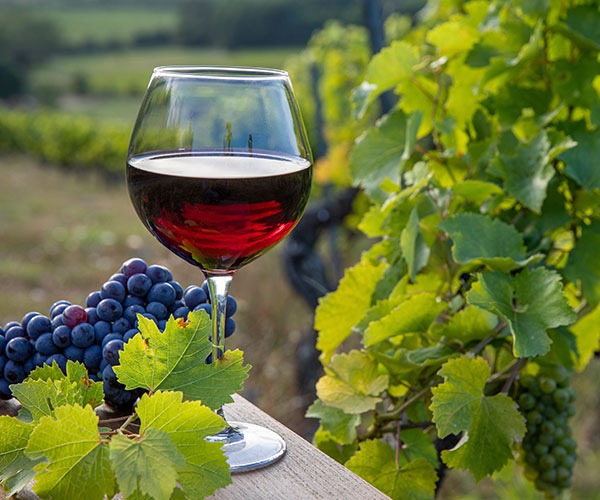Are you having a dinner party and don’t know which wine to choose?
I understand, it is not a simple thing to make a good wine pairing, oenology is a complex science. But that’s all right, you can learn everything and here are a few things you should bear in mind to make a good wine pairing.
With the variety of grapes, soils, climate and the know-how of French winegrowers, you are sure to find a wine to accompany your dinner.
The main rule is to find harmony between the dishes and the wines, so that they complement and enhance each other.
Finding harmony between dishes and wines means achieving a balance or a perfect combination between the flavours and characteristics of the dish and the wine chosen to accompany it, so that both complement and enhance each other’s flavours and aromas. In other words, that the combination of dish and wine is pleasant and satisfying to the palate.
You should know that the French vineyards cover 750 000 hectares, with more than 200 grape varieties of which 12 or 15 are the majority, so the examples of wines we give you here are a tiny part of what exists.
Here are some tips on how to choose the best French wine to accompany a dish:
- You can choose the wine according to the intensity of the dish, this is called the “mirror rule”.
- A light dish should be accompanied by a light wine.
- Light dishes include: salads, light soups, white fish, seafood, risottos and pastas with light sauces, grilled or steamed vegetables, and white meats such as chicken or turkey without heavy sauces. In France, there are many wines that are considered light, but some examples are:
- From the Loire Valley region: Touraine, Muscadet and Muscadet-sèvre-et-maine.
- From the Burgundy region: Petit Chablis et Mâcon.
- From the Beaujolais region: Beaujolais nouveau and Beaujolais.
- From the Provence region: Côtes-de-Provence and Coteaux-d’aix-en-provence.
- A dish with stronger flavours should be paired with a more intense wine. Dishes considered strong include game meat, stews with beef or lamb, spicy dishes, dishes with strong spices, mature cheeses and foods with intense sauces and condiments such as truffle sauce or liver sauce. In general, French wines considered as intense are those that are more full-bodied, powerful and have a higher concentration of flavour and body. Some examples of intense French wines are:
- From the Bourgogne region: Nuits-Saint-Georges, Corton et Rully.
- From the Beaujolais region: Morgon et Côte-de-Brouilly.
- From the Loire Valley region: Saumur Champigny.
- From the Bordeaux region: Médoc, Margaux, Pomerol.
- From the Rhône Valley region: Côte Rôtie, Saint-Joseph, Vacqueyras.
It is important to note that this varies according to the growing region and the techniques used by the winegrowers and the year of harvest.
- If you are going to taste several wines at the same dinner, respect this order of tasting, so that your taste buds are not altered. In fact, if you first taste something with a strong flavour and then something light, your taste buds will not be able to perceive the subtlety of the less intense dish.
- The whites should be taken before the reds
- The young before the old ones
- Dry wines before sweet ones.
- Those to be drunk chilled should be enjoyed before those to be drunk at room temperature
- You can choose the wine according to the origin of the dish. French wines are known to be highly regional, so you can choose a wine that comes from the same region as the dish. For example, if you have a dish from the Bourgogne region, you can opt for a wine from the same region. If you are having a sauerkraut, you would opt for a wine from Alsace. With a Mediterranean type dish, you will opt for a Languedoc Rousillon, Provence or southern Rhône Valley wine.
- There is also the possibility of associating different aromas and textures, this is called a pairing by opposition. Traditionally, wines with similar flavours and textures to the dish are paired because they complement each other. For example, a wine with notes of red fruit may go well with a dish whose sauce or accompaniment includes red fruit. Try opposing or contrasting pairings: If you want to be more adventurous, you can try combining different flavours and textures. For example, if you have a dish with a cream sauce, choose an acid wine that will counterbalance the fatty side of the cream; another example of opposition is the salty/sweet, the most common example is: with a Roquefort cheese, choose a sweet wine, the softness of the wine accompanies the fatty side of the cheese.
- Another solution, and the simplest, is to ask the advice of a cellarman or sommelier, as they have a deeper knowledge of each wine they propose, of the vineyards and the way the winegrowers work, and they can also help you discover wines that you would not normally choose or that are simply not available on the market.
My partner in this domain is Mathieu Lévi of the cave Sémélé. So if you come to Paris and you have the opportunity to visit him, don’t hesitate, you will surely leave with a good bottle to taste or to give as a gift.
The truth is that there is no precise rule for when you enjoy your dinner and wine, sometimes the easiest thing to do is to choose something you know and like. But if you really want to find the perfect wine for your favourite dish, it’s time to start tasting several wines until you discover the combination that brings out both flavours and you can perceive the notes and details in each one.


